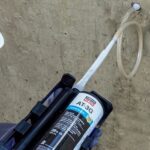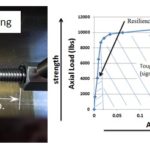In this post, we follow up on our August 28 webinar, Making the Right Anchor Choice: Best Practices in Anchor Design, by answering some of the interesting questions raised by attendees.
During the webinar where we discussed the critical performance factors and code requirements you need to consider when designing with or installing adhesive or mechanical anchors. In case you weren’t able to join our discussion, you can watch the on-demand webinar and earn PDH and CEU credits here.
As with our previous webinars, we ended with a Q&A session for the attendees. Our Anchor Systems Engineering Manager, Marlou Rodriguez, answered as many as we could in the time allowed. Now we are back to recap some of the commonly asked questions and their answers, but if you’d like to see the full list, click here.
Environmental Effects
What is the distance from the body of water where it is considered severe conditions?
The distance from the body of water for severe conditions is based on the environment. Severe condition is an environment that has airborne chlorides and water that will be in contact with the anchor. If the anchor is far away enough from the body of water that will prevent airborne chlorides and water, then it can be considered a less severe classification.
Is it a good idea to only specify adhesive anchors in exposed wet conditions with freeze/thaw conditions?
Yes, Simpson’s ‘cracked concrete’ qualified adhesives are tested to perform in conditions where the substrate can freeze and thaw. Simpson’s SET-3G is capable of performing when in service temperatures drop to -40°F (-40°C) and increase up to 176°F (80°C).
Water-Saturated Concrete, and Submerged Concrete, what is the distinction?
The definition for water-saturated concrete is a concrete that has been exposed to water over a sufficient length of time to have the maximum possible amount of absorbed water into the concrete pores. The definition of submerged is correct in C-A-2018 which is “Cured concrete that is covered with water and water saturated.”
Substrates
I’ve heard that wedge anchors should not be used in masonry, bricks blocks? especially for seismic masonry installations
Simpson Strong-Tie’s expansion (wedge) anchors, Strong-Bolt 2 and Wedge- All have approvals for use with grout-filled CMU. These approvals allow the use of the tested values for wind and seismic. In brick type systems, it is recommended to use adhesive anchors because of the voids that are typically found in brick. The adhesive with a plastic or steel screen are ideal to allow the adhesive to build around the voids to create a plug. Expansion anchors are not recommended in brick type substrates because the force developed to expand the clip may fracture the substrate.
Cracked Concrete
What about concrete floors with shrinkage cracks? Are they considered “cracked”?
Yes, the analysis for the determination of crack formation should include the effects of restrained shrinkage. ACI 355.2 and ACI 355.4 testing require tested in cracks that are 0.012 inches wide which might be appropriate for shrinkage cracks depending.
Why is uncracked concrete assumed for wind applications?
ACI 318-14 section 17.2.3.1 requires anchors in Seismic Design Category (SDC) C, D, E, or F be designed with anchors that have been qualified for earthquake loading in accordance with ACI 355.2 and ACI 355.4. Wind governed designs that are in Design Categories A and B are not required to be designed for cracked concrete unless service stresses would deem cracked concrete analysis appropriate.
Building Code Requirements
Are your products approved for use in Europe and compliant with Euro Codes, etc.?
Yes. Products for European approvals can be found from our website, strongtie.com. Change your location from the top left corner to a European country where the product will be used. The Anchor Designer software also includes ETAG (European Code) as a design option.
ACI 318-11 appendix D and now ACI 318-14 chapter 17 require a minimum concrete age of 21 days for adhesive anchors. Does Simpson provide a product for an adhesive anchor to be installed prior to the 21 days and still maintain bond strength?
Page 250 of C-A-2018 provides guidance on reduction factors when installing anchors into green concrete that has only cured for 7 and 14 days prior to adhesive installation.
Any of these anchor approved by the Canadian codes?
Design of Concrete Structures Canadian building code CSA A23.3-14 Annex D, section D.4.3.4 requires post installed anchors to be qualified in accordance with ACI 355.2 or ACI 355.4. Simpson Strong-Tie has several anchors that have been qualified in accordance with those standards. Please see C-A-2018 for a list of those anchors.
Jobsite Obstacles / Installation
Can you reuse screw anchors?
No. Titen HD screw anchors (THD) and Titen concrete and masonry screws (TTN) are removable but not recommended to be reused. The published values may not be achieved when a THD or TTN is re-used.
Can any installation equipment be used for your anchors?
Manual torque wrenches can be used to install screw anchors and expansion anchors. Electric or battery powered impact wrench can only be used for screw anchors and should not be used for expansion anchors.
Do most Titan HD anchor bolt installations thru concrete foundations require cleaning of the hole and the use of epoxy?
Titen HD screw anchors are not meant to be used with any adhesive. They can be installed without hole cleaning if the hole is drilled a few inches deeper than is required and the concrete is thick enough to accommodate the additional drilled length.
Can you define critical edge distance?
Critical edge distance is defined as the distance away from the edge at which the anchor capacity will no longer be reduced because of its proximity to the edge.
Adhesive Anchors
What is the average set time for adhesive anchors?
There is no quote ‘average’ set time for an adhesive as it is different for each product depending on temperature. See the catalog for individual set times and gel times.
What is the definition of “gel time”?
Page 255 of C-A-2018 provides a definition of Gel Time. It is the time it takes for the adhesive to harden enough where it can no longer flow. This is the time the installer has to install the threaded rod or rebar.






